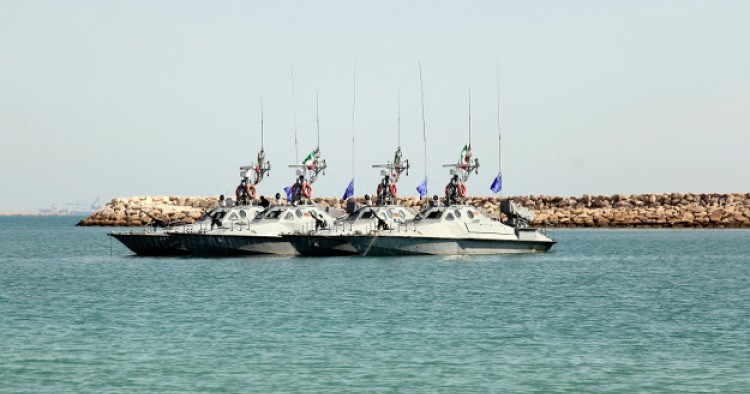The Iranian Navy on Sunday launched large-scale maritime exercises near the strategic Strait of Hormuz by showcasing warships, submarines and attack helicopters as well as test-firing new, advanced missiles. According to the Iranian media, the naval drills marked the last phase of Iranian Navy’s annual war game – dubbed “Velayat 95” – and covered an area of two million square kilometers, stretching from the Strait of Hormuz and the Gulf of Oman to north of the Indian Ocean and Bab al-Mandab Strait. During the two-day drills, the Iranian Navy for the first time tested-fired laser-guided, anti-submarine Dehlaviyeh missiles to destroy mock targets. Iran’s Defense Minister Brigadier General Hossein Dehghan also confirmed that the Navy launched its latest cruise missile named Nasir.
Separately, Iranian Navy Commander Rear Admiral Habibollah Sayyar told state-run Islamic Republic of Iran Broadcasting on Saturday that the country’s Navy will soon add a Sahand-class destroyer to its marine fleet. He claimed that Sahand’s stealth capability is 30 percent greater than that of previous models, Jamaran-class and Damavand-class destroyers. He also announced that the Iranian Navy will dispatch a flotilla to Russia and Turkmenistan, and will host Pakistani and Azerbaijani forces in the near future.
Comment: The drills are the first large-scale war games by the Iranian Navy since President Donald Trump took office last month and come amid escalating tension between Washington and Tehran over the latter’s controversial missile activity and support for terrorism in the region.
The location of the drills is also significant. The Strait of Hormuz is strategically important for all regional countries as well as for the stability of the global oil market and international trade. About a third of all oil traded by sea passes through the region. The U.S. Navy’s Fifth Fleet, which is headquartered in Bahrain and protects shipping routes in the region, has certainly closely monitored the Iranian drills. This is because the Iranian naval forces, especially those belonging to the country’s elite Islamic Revolution Guards Corps (I.R.G.C.), have been constantly harassing U.S. Navy personnel in the region recently. Last month, for example, the U.S.S. Mahan fired warning shots at five Iranian vessels that were approaching the destroyer and two other U.S. ships at high speed. And last year, the U.S. Navy had a total of 35 encounters with the Iranian naval forces. The most high-profile incident occurred when Iran briefly captured 10 U.S. sailors whose small boats had inadvertently strayed into Iranian territorial waters.
The Iranian drills are also aimed at their domestic audience. By launching massive military exercises and publicizing them widely through the media, the Iranian military wants to assure the Iranian people that the country has the power to repel any potential foreign aggression, and also to justify the military's ever growing budget at the expense of socio-economic and other domestic priorities.
The Middle East Institute (MEI) is an independent, non-partisan, non-for-profit, educational organization. It does not engage in advocacy and its scholars’ opinions are their own. MEI welcomes financial donations, but retains sole editorial control over its work and its publications reflect only the authors’ views. For a listing of MEI donors, please click here.












